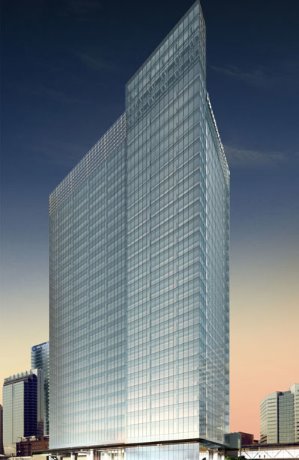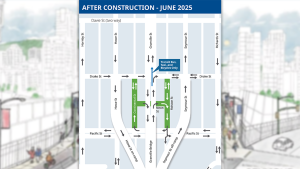Executives from EllisDon Corp. and Cisco Systems Inc. (NASDAQ: CSCO) say Internet Protocol and Power over Ethernet can cut construction costs if you use the technologies to control building systems such as heating, ventilation, air conditioning (HVAC), security and lighting.
Building automation systems that control HVAC, lighting and security systems are nothing new, and neither is Internet Protocol, or IP, a common electronic communications method used by devices such as computers, servers and routers to send packets of data and other content among devices over an electronic network, such as the public Internet.
Originally, only computing and data communications devices had IP addresses, but now wireless phones and other electronic devices have them. Some experts say if you give building automation systems IP addresses, this can help reduce construction costs.
“I have seen a significant change in the last nine to 18 months,” said Rick Huijbregts, vice-president for smart connected communities, real estate, at Cisco Systems Canada Co. (NASDAQ: CSCO) “IP has become the next network in buildings.”
IP is now an option to other electronic communication protocols, such as BACnet, that were originally designed specifically for communicating among heating, ventilation and air conditioning (HVAC) controllers and other building automation devices.
Huijbregts said the design of IT, telecommunications and video networks has started to merge with the fields of building electrical and mechanical systems.
Cisco Canada is one subcontractor working on the electronic network infrastructure of a 600,000-square foot building at 18 York Street in Toronto, dubbed 18 York, scheduled for completion this September and owned by The Great-West Life Assurance Company. The general contractor for 18 York is EllisDon Corp.
EllisDon’s director of information and communication technologies, Stephen Foster, said the owner of 18 York was interested in using IP to connect its HVAC systems.
Foster said making building automation systems communicate using IP can help reduce costs.
Huijbregts said another way to reduce costs is to use Power over Ethernet, or PoE, which essentially uses the same computer cables that deliver information to also deliver the electricity, meaning you do not have to install both computer and electrical cabling to the same device. PoE is commonly used to power IP phones and wireless access points so you don’t need access to an AC power outlet.
But some information technology professionals are reluctant to bring building automation systems on to the computer networks, said Steve Todd, operations manager for Mississauga, Ont.-based TA Canada, which supplies systems to control HVAC, security systems and lighting from a computer console.
“I fully believe in using an IP backbone in building automation or lighting control,” Todd said, adding the world is moving to a stage at which all controllers for HVAC and lighting will communicate by IP.
“The whole building automation world is going towards more open systems,” he said, but added with respect to IP, “it hasn’t gotten there yet.”
“IT guys are still afraid of building automation and other systems hanging on their network. They are afraid of somebody hacking their network.”
This can be mitigated through the use of firewalls, Todd added. Firewalls are computer security products designed to block some types of network traffic both to and from the user’s system.
Asked whether he agrees that building owners can cut construction costs by moving to IP or Power over Ethernet, Todd said there can be an initial cost savings, but this could be offset by the cost to manage the IP-based network.
“On installation, you might save five per cent by using IP,” Todd said, but he added the company might spend an additional 10 per cent to paying an IT professional to manage the network.
Cisco first made its foray into building automation systems in early 2009 when it announced EnergyWise, a software update to its high-end Catalyst line of computer switches designed to control power to IP phones, wireless access points, personal computers and printers.
At the time, Cisco had planned to release in 2010 a version of EnergyWise that would control building systems such as HVAC, lights, fire alarms and security.
Bill McGowan, systems architect with Cisco’s connected real estate business unit, said Cisco launched a software developer kit in March for EnergyWise, which works on HVAC, lighting and metering systems.
In the future, all building automation systems will have an IP address, predicts Greg Moran, an HVAC professor at the Durham College school of skilled trades, apprenticeship and renewable technology in Oshawa, Ont.
Moran said a system that was installed in a new building on his campus will pay for itself over time, because in the past some HVAC systems were not running very efficiently but there was no way to monitor performance.
“You can have an idea of where the problem is in the building and what the problem is,” he said, adding that when a property manager sends a technician to solve the problem, he or she can have a good idea of what the technician needs to bring.
EllisDon’s Foster said one application of IP in building systems is emergency notification. Instead of relying on a separate network for the building security systems, you could put all electronic signs, IP phones, lighting systems and security on the same network. For example, he said, a security alert can display information on electronic signs, automatically lock doors and the IP phones can be used to send message to various people in the building.

1/2












Recent Comments
comments for this post are closed